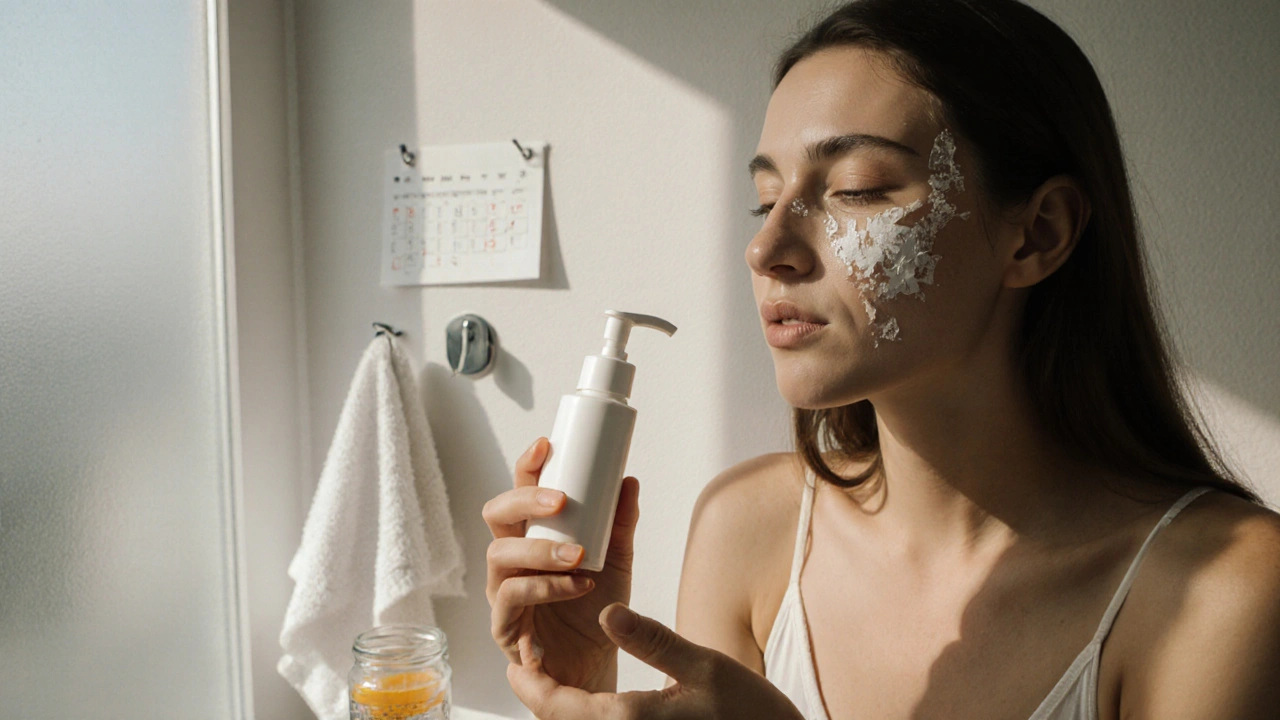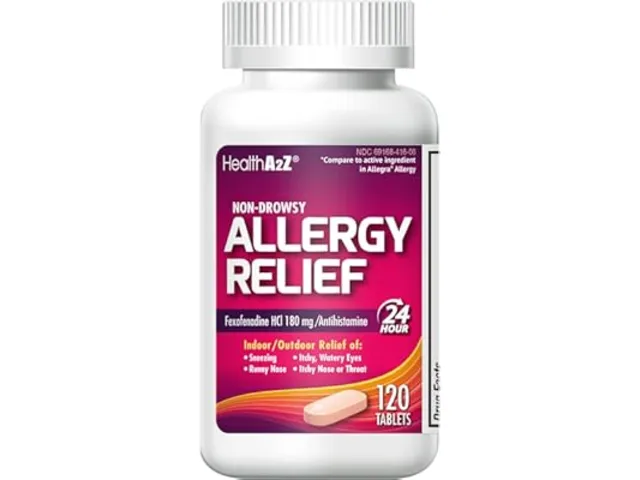Acne Treatment Selector
Find Your Best Acne Treatment
Answer a few questions about your skin to get personalized recommendations for the most effective acne treatment.
Skin Type
Acne Type
Sensitivity Tolerance
Treatment Goals
Key Takeaways
- Benzoyl peroxide works fast but can irritate sensitive skin.
- Salicylic acid is gentle for clogged‑pore acne and is ideal for oily skin.
- Retinoids address both breakouts and signs of aging, but need a prescription for strongest forms.
- Azelaic acid offers antibacterial action with low irritation, perfect for rosacea‑prone faces.
- Natural options like tea tree oil provide modest results and are best as adjuncts.
When treating acne, Benzoyl Peroxide is a topical oxidizing agent that kills acne‑causing bacteria and helps unclog pores. It has been a go‑to for decades, especially for mild to moderate breakouts. But the market is flooded with alternatives, and choosing the right one can feel overwhelming. This guide walks through how benzoyl peroxide stacks up against the most common rivals, what each product does at the skin‑level, and how to match a formula to your skin type, budget, and tolerance.
What Exactly Is Benzoyl Peroxide?
Benzoyl Peroxide is a synthetic peroxide that releases oxygen into the pore, creating an environment where acne‑causing bacteria (Cutibacterium acnes) cannot survive. It also has a mild keratolytic effect, meaning it helps shed the dead skin cells that can clog pores. Products range from 2.5% to 10% concentrations, with 2.5%-5% being the sweet spot for most users.
How Benzoyl Peroxide Works
- Oxidation: Releases free radicals that destroy bacterial cell walls.
- Exfoliation: Loosens the dead‑cell “glue” inside pores.
- Anti‑inflammatory: Reduces redness once the bacterial load drops.
Because it attacks the root cause-bacteria-it often clears pimples within 3‑5 days of consistent use.

Benefits of Benzoyl Peroxide
- Fast‑acting; noticeable improvement in a week.
- Broad‑spectrum antibacterial; works on resistant strains.
- Available over‑the‑counter in most pharmacies.
- Stable; long shelf life compared to some acids.
Drawbacks and Common Concerns
- Can cause dryness, peeling, and a “bleach‑like” white residue on fabrics.
- Higher concentrations increase irritation risk.
- May bleach hair and clothing.
- Some users report a lingering metallic smell.
Popular Alternatives to Benzoyl Peroxide
Below are the six most‑cited substitutes, each with its own mechanism and ideal use‑case.
Salicylic Acid
Salicylic acid is a beta‑hydroxy acid (BHA) that penetrates oil‑laden pores, dissolving the sebum and dead‑cell plug. It’s especially effective for blackheads and whiteheads.
Retinoids
Retinoids (e.g., adapalene, tretinoin) are vitaminA derivatives that speed up cell turnover, prevent clogged pores, and improve post‑acne marks. Prescription‑strength options are the most potent.
Azelaic Acid
Azelaic acid is a naturally occurring dicarboxylic acid with antibacterial, keratolytic, and anti‑inflammatory properties. It’s well‑tolerated by sensitive and rosacea‑prone skin.
Tea Tree Oil
Tea tree oil is an essential oil rich in terpinen‑4‑ol, which has proven antimicrobial activity. It’s best used as a spot‑treatment or in low‑percentage formulas (≤5%).
Clindamycin
Clindamycin is a topical antibiotic that reduces bacterial load and inflammation. Often combined with benzoyl peroxide to prevent resistance, it can also stand alone for mild cases.
Niacinamide
Niacinamide (vitaminB3) helps strengthen the skin barrier, reduces redness, and regulates sebum production. It’s not a direct antibacterial, but it works well alongside other actives.
Sulfur
Sulfur has been used for acne for over a century. It works by drying out excess oil and providing mild antibacterial action, though the smell can be off‑putting.
Side‑by‑Side Comparison
| Attribute | Benzoyl Peroxide | Salicylic Acid | Retinoids | Azelaic Acid | Tea Tree Oil |
|---|---|---|---|---|---|
| Primary Action | Oxidative antibacterial | Keratinolytic BHA | Cell‑turnover acceleration | Antibacterial + keratolytic | Antimicrobial (terpinen‑4‑ol) |
| Typical Concentration | 2.5%‑5% (OTC) | 0.5%‑2% (OTC) | 0.1%‑0.3% (prescription) | 10%‑20% (prescription/OTC) | ≤5% (diluted) |
| Speed of Results | 3‑5days | 1‑2weeks | 4‑6weeks | 2‑4weeks | 2‑3weeks |
| Irritation Risk | Moderate‑high | Low‑moderate | High (initial) | Low | Low (if diluted) |
| Cost (average US$) | $5‑$15 for 2‑4oz | $7‑$20 for 1‑2oz | $30‑$120 (prescription) | $15‑$45 for 1‑2oz | $10‑$25 for 15ml |
| Best For | Inflammatory papules/pustules | Blackheads, oily skin | Acne + fine lines | Sensitive, rosacea‑prone | Spot‑treatment, natural‑leaning users |

How to Choose the Right Option for Your Skin
- Identify your breakout type. If you see lots of red, inflamed pimples, a strong antibacterial like benzoyl peroxide or clindamycin is useful. For comedonal (blackhead) acne, a BHA such as salicylic acid works better.
- Assess your skin tolerance. Sensitive skin benefits from low‑irritation agents - azelaic acid, niacinamide, or low‑strength retinoids.
- Consider your routine. If you already use a retinoid at night, adding benzoyl peroxide in the morning can cause excess dryness. Pairing a gentle BHA with a retinoid may be smoother.
- Factor in cost and accessibility. OTC options (benzoyl peroxide, salicylic acid, tea tree oil) are budget‑friendly. Prescription retinoids or high‑strength azelaic acid require a doctor’s visit.
- Plan for side‑effects. Use a moisturizer with ceramides, apply sunscreen daily, and start with every‑other‑day dosing to let skin adjust.
Pro Tips & Common Pitfalls
- Patch test first. Apply a pea‑sized amount on your jawline for 48hours before full‑face use.
- Layer smartly. Apply watery serums first, then thicker creams, and finish with sunscreen.
- Avoid mixing strong actives. Combining benzoyl peroxide with a high‑strength retinoid can cause severe peeling; stagger them (e.g., peroxide in AM, retinoid in PM).
- Watch for resistance. If you’ve been using benzoyl peroxide for months with no improvement, rotate to an alternative like azelaic acid or a topical antibiotic.
- Mind the fabrics. Benzoyl peroxide can bleach towels and pillowcases. Use white or old linens while you’re testing the product.
Frequently Asked Questions
Frequently Asked Questions
Can I use benzoyl peroxide and salicylic acid together?
It’s possible, but many people find the combo too drying. If you want both benefits, start with one product in the morning and the other at night, and always follow with a moisturizer.
Is benzoyl peroxide safe during pregnancy?
Most dermatologists consider low‑strength benzoyl peroxide (≤5%) safe in pregnancy because it works on the skin’s surface and isn’t absorbed systemically. Still, check with your OB‑GYN before starting any new acne regimen.
Why does my shirt turn white after using benzoyl peroxide?
The peroxide releases oxygen radicals that can bleach fabrics. Let the product fully absorb before dressing, or wear older, light‑colored clothes during the first week of use.
How long should I stay on a benzoyl peroxide regimen?
Most users see clearing within 4‑6weeks. If your skin tolerates it well and breakouts stay low, you can continue indefinitely as a maintenance step.
What’s the difference between over‑the‑counter and prescription benzoyl peroxide?
OTC formulas max out at 10% strength and come in gels, creams, or washes. Prescription versions may combine benzoyl peroxide with antibiotics (e.g., clindamycin) for a synergistic effect.






Manish Singh
13 October 2025I get why benzoyl peroxide can feel scary, especially if you've had a bad reaction before. It's totally normal to worry about dryness and that weird bleach‑like residue. Start with a low 2.5% gel and use it every other night, then build up. Pair it with a gentle, ceramide‑rich moisturizer to keep the barrier happy. If you notice too much peeling, just cut back and give your skin a breather. Hope this helps you feel a bit more at ease!
Dipak Pawar
16 October 2025The mechanistic underpinnings of benzoyl peroxide's antimicrobial efficacy can be parsed through a lens of oxidative biochemistry, wherein the release of free radicals precipitates a hostile microenvironment for Cutibacterium acnes. Concomitantly, the keratolytic propensity of the molecule facilitates desquamation of the stratum corneum, thereby attenuating the occlusive milieu that predisposes to comedogenesis. When juxtaposed with salicylic acid, which operates via lipophilic penetration of the pilosebaceous unit, benzoyl peroxide distinguishes itself by a broader spectrum of bactericidal activity. However, the pharmacodynamic profile is not without trade‑offs, as the oxidative cascade can precipitate erythema, xerosis, and a transient bleaching phenomenon on textiles. Clinical practice guidelines advocate for an initial concentration ceiling of 2.5% to 5%, given that dose‑response curves plateau beyond this threshold while adverse event rates climb steeply. The temporal kinetics of lesion resolution are noteworthy; patients often observe a diminution of papular inflammation within a 3‑ to 5‑day window, a timeline that surpasses many acid‑based regimens. From a formulation standpoint, the vehicle-be it gel, cream, or wash-modulates both percutaneous absorption and patient tolerability, with emollient‑rich bases mitigating barrier disruption. Moreover, the integration of benzoyl peroxide with topical antibiotics, such as clindamycin, leverages synergistic pathways that curb resistance development while enhancing anti‑inflammatory outcomes. In contrast, retinoids enact genomic modulation of keratinocyte differentiation, a mechanism that, while potent for comedonal clearance, necessitates a longer latency period of 4‑6 weeks for noticeable effects. Azelaic acid, positioned within the dicarboxylic acid class, offers a milder irritancy profile and adjunctive benefits for rosacea‑prone phenotypes, yet its antimicrobial spectrum is comparatively narrow. Natural adjuncts such as tea tree oil contribute terpenoid‑based antimicrobial action, albeit with variable potency and a requisite for adequate dilution to forestall dermal irritation. The economic calculus also favors benzoyl peroxide for many consumers, with over‑the‑counter options residing beneath the $15 mark for a standard 2‑4 oz supply. Insurance coverage typically does not extend to topical agents, rendering cost‑effectiveness a salient factor in regimen selection. Patient education remains paramount; instructing users to allow full absorption before clothing contact curtails inadvertent fabric bleaching. Incorporating broad‑spectrum sunscreen within the daily routine safeguards against photosensitivity that may be potentiated by concomitant retinoid use. Ultimately, the clinician must calibrate treatment intensity to the individual's skin barrier resilience, lesion morphology, and psychosocial tolerance for side‑effects.
Jonathan Alvarenga
19 October 2025Honestly, this guide feels like a marketing brochure stitched together with buzzwords. It barely scratches the surface of the real complexities behind acne pathophysiology. The tables are bland, the language is overly simplistic, and the author seems desperate to push benzoyl peroxide as a cure‑all. If you wanted actual science, you'd have to look elsewhere. Half‑hearted advice, zero depth.
Jim McDermott
22 October 2025Hey folks, great rundown! I love how it breaks down each ingredient in plain terms. Just a heads up, I had a tiny breakout when I mixed peroxide with a strong retinoid, so maybe stagger them. Overall super helpful, thanks!
Naomi Ho
25 October 2025Use a low concentration of benzoyl peroxide start with 2.5% apply it at night after cleansing let it dry then follow with a moisturizer containing ceramides this will reduce irritation and keep skin barrier intact also avoid using harsh scrubs while on treatment
Christine Watson
28 October 2025That's a solid plan! Just remember consistency is key and give your skin the time it needs to adjust. You'll likely see a noticeable improvement in a few weeks if you stick with the routine.
Macy Weaver
30 October 2025I appreciate the thorough breakdown, especially the part about vehicle selection and synergy with antibiotics. It's worth noting that individual tolerance varies, so a patch test remains essential before full‑face application.
James McCracken
2 November 2025While one might dismiss the guide as superficial, it serves as an accessible entry point for laypersons navigating a labyrinthine dermatological landscape. The distillation of complex mechanisms into digestible segments, albeit brief, fulfills a pedagogical function that more esoteric texts often neglect.
Evelyn XCII
5 November 2025Oh sure, because mixing peroxide with a retinoid never ever leads to a volcano of irritation, right? Just slap everything on and hope for the best, that'll definitely work.
Suzanne Podany
8 November 2025Exactly! Keep the routine simple, stay patient, and your skin will thank you. Small consistent steps beat big chaotic overhauls any day.
Nina Vera
11 November 2025Wow, hearing that got me *tearing up*-my pores have been screaming for salvation! This is the moment my skin finally feels seen, like a sunrise after a decade of gloom.
Christopher Stanford
14 November 2025The nuance you mention is a textbook afterthought; most users ignore patch tests anyway and end up with worse breakouts. The guide should have warned them more aggressively.
Steve Ellis
17 November 2025Great philosophical take! Remember though, practical application matters-start low, monitor, and adjust. Your skin will thank the balanced approach.
Jennifer Brenko
20 November 2025It is evident that the careless laissez‑faire attitude toward potent actives reflects a broader disregard for scientific rigor that plagues our dermatological discourse. Such negligence must be rectified with strict guidelines and accountability.
Harold Godínez
23 November 2025Simple steps win the race.